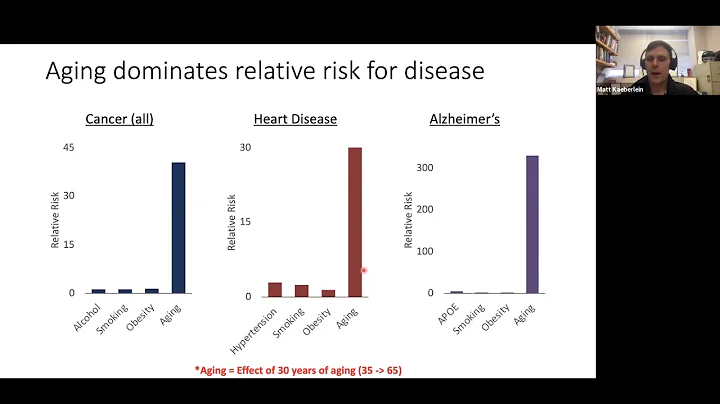
| Qi
Glucagon-like peptide 1 (GLP1) is an incretin hormone that induces insulin secretion through its receptor GLP1R, but the rapid degradation of GLP1 by DPP-4 in vivo limits its use in obesity and Therapeutic potential of type 2 diabetes (T2D) . GLP1R agonist - liraglutide (liraglutide) The amino acid sequence of is 97% similar to GLP1. The additional albumin it carries can reduce its cleavage by DPP-4 and bind fatty acid side chains. Extend its half-life [1, 2] . Liraglutide reduces food intake, increases fatty acid oxidation, and induces weight loss, and has been approved as an anti-obesity treatment in individuals with and without T2D.[3]. Numerous studies have shown that liraglutide can arrive at the microvascular level or across the blood-brain barrier (BBB) in periventricular organs (CVOs) such as the median eminence (ME) or posterior pole (AP). Target cells in the medial base of the hypothalamus regulate energy metabolism, but the exact transport route remains unknown[4, 5].
However, surgical removal of AP does not affect the efficacy of liraglutide. Researchers have found that in ME, a type of highly specialized ependymal glial cells called "tanycytes" can act as "gatekeepers", transporting metabolic signals such as leptin and ghrelin into the cerebrospinal fluid [4, 6], considering that this group of cells can directly contact blood-borne nutrients and hormones through the pore endothelial wall of ME capillaries[7], can it also mediate liraglutide to enter the medial hypothalamus base? part, thereby enabling it to regulate energy homeostasis?
Recently, the Vincent Prevot team and the Caroline Bonner team from EGID in France jointly published an article titled Tanycytes control hypothalamic liraglut in the journal Cell Metabolism ide uptake and its anti-obesity actions article, they prove that liraglutide can bypass Crosses the blood-brain barrier and shuttles through tanycytes to target cells in the hypothalamus. Selective silencing of GLP1R in tanycytes or inhibition of tanycytic transcytosis via botulinum neurotoxin expression impedes liraglutide transport and blocks its resistance to food intake, weight loss, and fatty acid oxidation Obesity effect. Taken together, delineates the transport route of liraglutide, underscoring the position of tanycytes as critical gatekeepers of metabolic homeostasis.

To "capture" liraglutide on its way into the brain to determine its transport route, the researchers administered it intrajugular and fluorescently labeled it. Interestingly, 60 s after injection, liraglutide did not cross the microvascular endothelial cells of the BBB, but extravasated through the fenestrated vessels of the ME and briefly appeared in the ventromedial hypothalamic arcuate nucleus (vmARH) tanycytes and neuronal cell bodies. Subsequently, they used primary cultures in the transwell system to study the role of tanycytes in liraglutide transport. In vitro pulse-chase experiments showed that 125I-liraglutide was rapidly absorbed by tanycytes. If the radiolabeled substrate was removed, its cellular The internal concentration dropped immediately.
To determine whether transcytosis of tanycytes mediates liraglutide-induced activation of hypothalamic neurons, we used botulinum toxin expressing that specifically inhibits SNARE-mediated exocytosis of . In the mouse model of serotype B light chain (BoNT/B) , the recombinant protein TAT-Cre was injected into the third ventricle of BoNTB-EGFPloxP-STOP-loxP mice to achieve BoNT/B expression in tanycytes [8 】, referred to as "iBot" mouse. It is worth noting that compared with the control group, intravenous injection of liraglutide failed to significantly induce cFos (neuron activation marker) expression in hypothalamic neurons of iBot mice, indicating that blocking tanycytes Vesicular transport in attenuates liraglutide-mediated neuronal activation in the hypothalamus and confirms that liraglutide enters the hypothalamus via transcytosis of tanycytes.
Next, the researchers further explored the anti-obesity effect of liraglutide in iBot mice. Liraglutide significantly reduced food intake and promoted weight loss and fat mass loss associated with increased fatty acid oxidation in control mice. In contrast, these effects were abolished in iBot mice. To determine whether GLP1R expression in tanycytes plays a role in this process, the researchers used shRNA to silence Glp1r expression, as in iBot mice, Glp1r Tanycyte KD mice Effects of liraglutide on food intake, weight loss, and fatty acid oxidation Resistant.

Studies to date, while demonstrating liraglutide’s impact on weight loss, have not specified its exact route into the brain. This work demonstrates that blood-borne liraglutide does not cross the BBB mediated by endothelial cells that do not express GLP1R, but rather acts directly on target neurons in the hypothalamus to regulate energy via transcytosis of tanycytes homeostasis, emphasizing the critical "bridging" role of this group of cells.
Original link:
https://doi.org/10.1016/j.cmet.2022.06.002
Plate maker: Eleven
References
1. Garber, A.J. (2011). Long-acting glucagon-like peptide 1 receptor agonists. Diabetes Care 34, S279–S284.
2. Kim, W., and Egan, J.M. (2008). The role of incretins in glucose homeostasis and diabetes treatment. Pharmacol. Rev. 60, 470–512.
3. Drucker, D. J., Habener , J.F., and Holst, J.J. (2017). Discovery, characterization, and clinical development of the glucagon-like peptides. J. Clin. Investig. 127, 4217–4227.
4. Prevot, V., Dehouck, B. , Sharif, A., Ciofi, P., Giacobini, P., and Clasadonte, J. (2018). The versatile tanycyte: a hypothalamic integrator of reproduction and energy metabolism. Endocr. Rev. 39, 333–368.
5. Fortin, S.M., Lipsky, R.K., Lhamo, R., Chen, J., Kim, E., Borner, T., Schmidt, H.D., and Hayes, M.R. (2020). GABA neurons in the nucleus tractus solitarius express GLP- 1 receptors and mediate anorectic effects of liraglutide in rats. Sci. Transl. Koch, M., Horvath, T.L., Yi, C.X., Chowen, J.A., Verkhratsky, A., et al. (2019). Role of astrocytes, microglia, and tanycytes in brain control of systemic metabolism. Nat. Neurosci. 22 , 7–14.
7. Langlet, F., Mullier, A., Bouret, S.G., Prevot, V., and Dehouck, B. (2013b). Tanycyte-like cells form a blood–cerebrospinal fluid barrier in the circumventricular organs of the mouse brain. J. Comp. Neurol. 521, 3389–3405.
8. Slezak, M., Grosche, A., Niemiec, A., Tanimoto, N., Pannicke, T., Munch, T.A., Crocker, B., Isope, P., Hartig, W., Beck, S.C., et al. (2012). Relevance of exocytotic glutamate release from retinal glia. Neuron 74, 504–516.
Reprint Instructions
【Original Article】BioArt Original Articles are welcome to be forwarded and shared by individuals. Reprinting without permission is prohibited. The copyright of all published works is owned by BioArt. BioArt reserves all legal rights and any violators will be prosecuted.





















